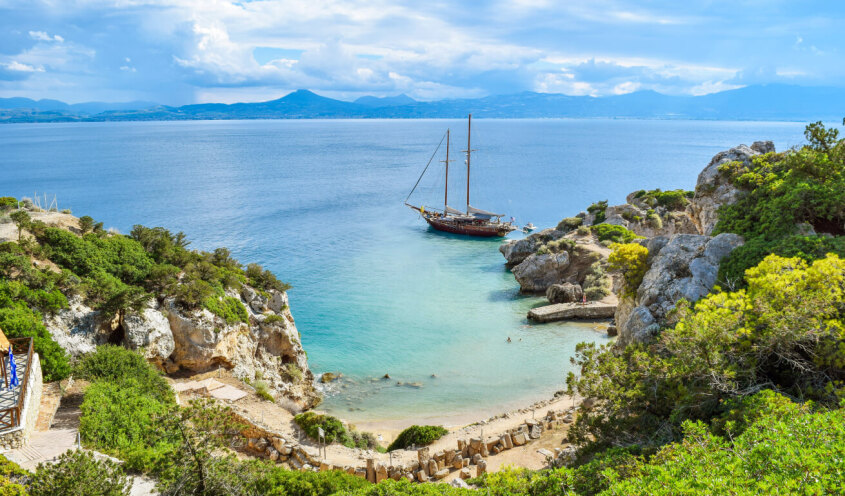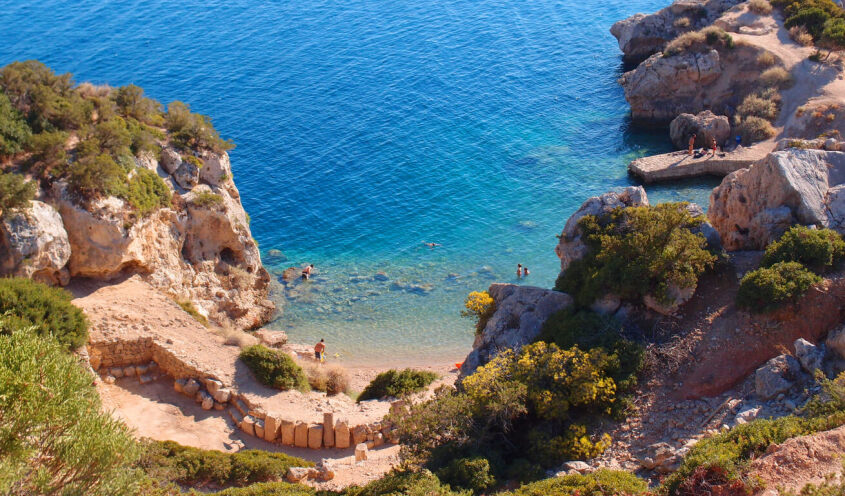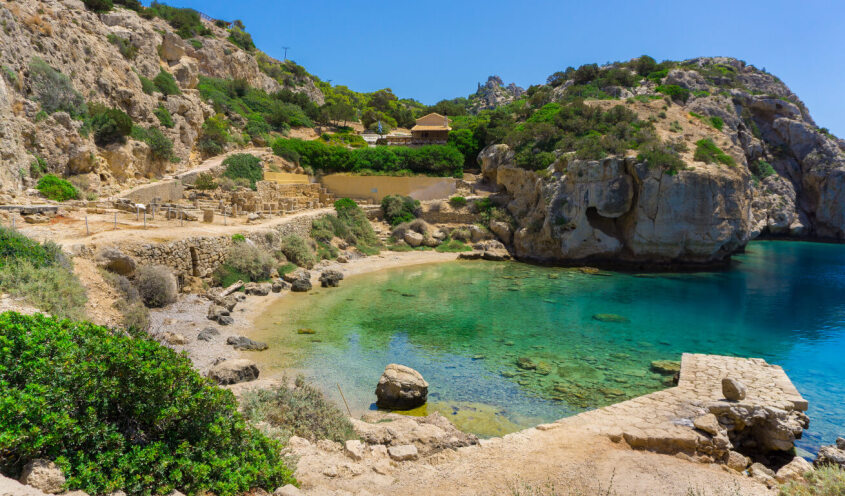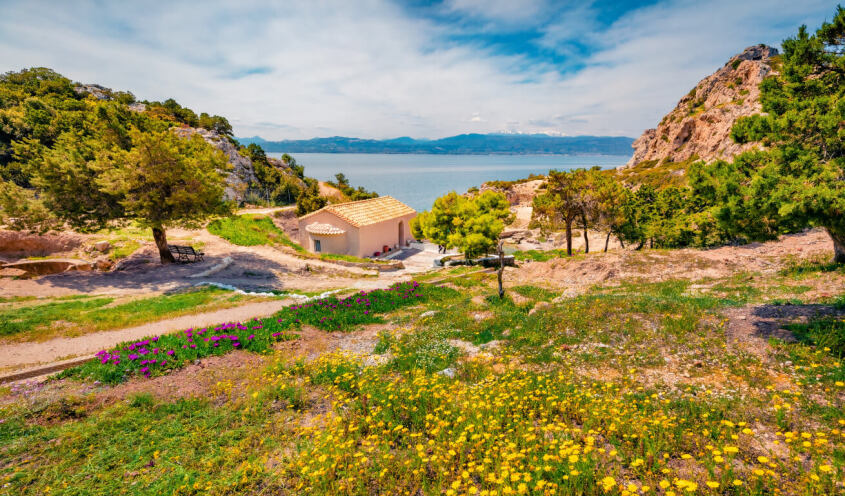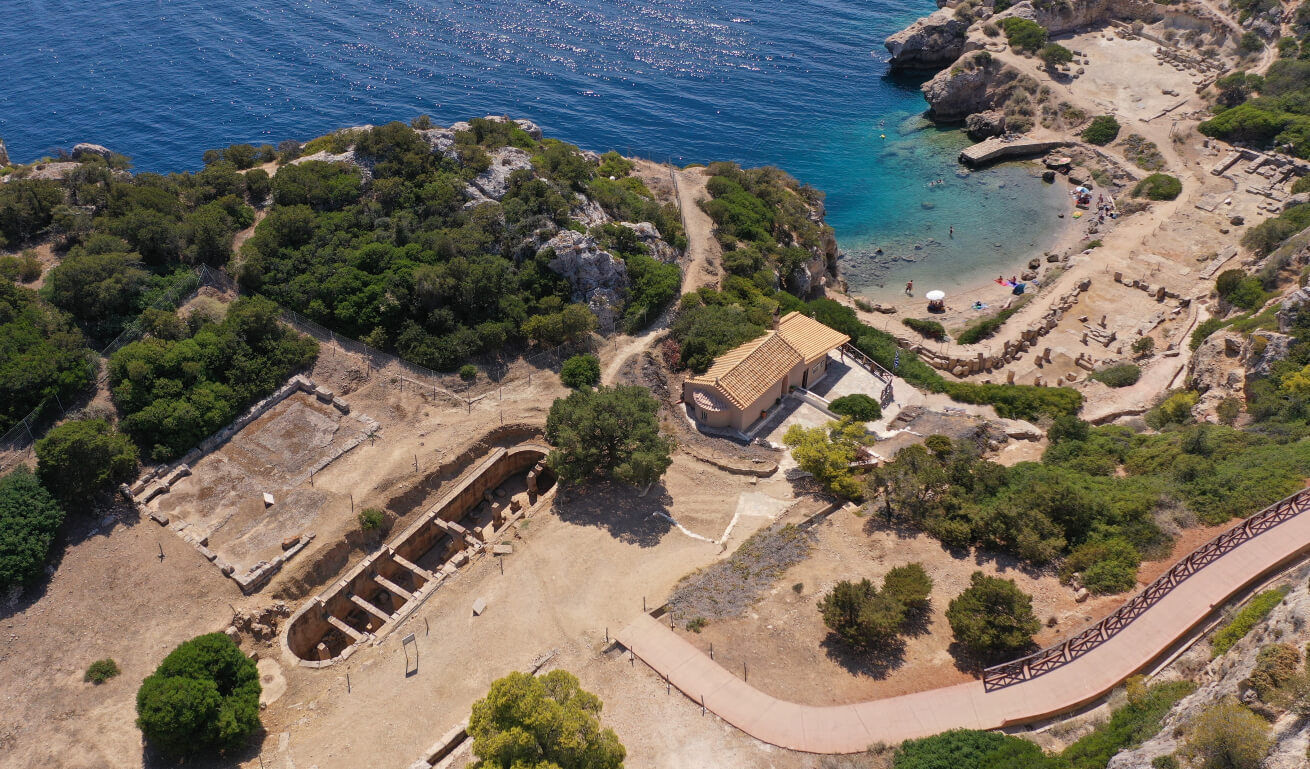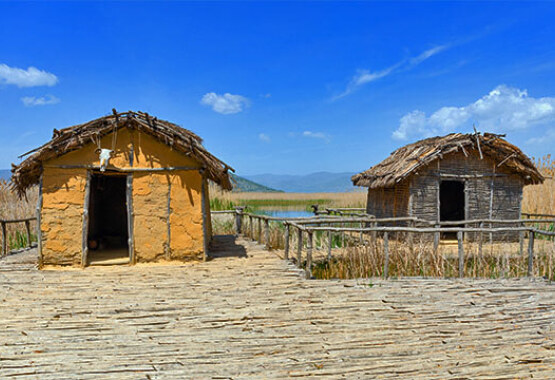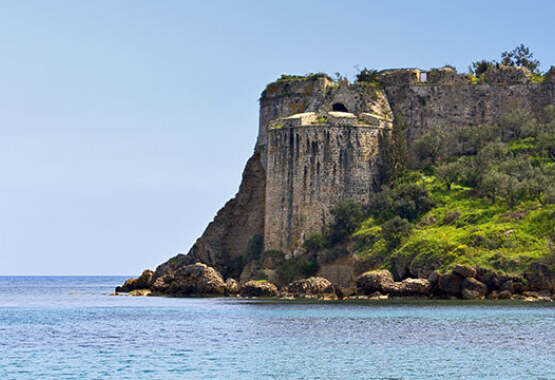
KORINTHOS
Visit the archaeological site of Heraion and see up close; the Temple of Hera located in the harbour beneath the Melagkavi lighthouse, relics dating back to antiquity such as an L-shaped stoa (freestanding colonnade or covered walkway), a large cistern, dining halls as well as a second smaller temple. The relics found in the area demonstrate its importance during the pre Roman Age.
The very first excavations of the site were conducted from 1930 to 1933 by Humphry Payne, Director of the British School in Athens. The research went on from 1938-1939 by Thomas J. Dunbabin and from 1964-1965 by Birmingham Richard Tomlinson, Director of the British School in Athens.
The Heraion of Perachora is divided in two parts and was believed, up to recently, that it concerned two separate sanctuaries, one dedicated to Hera Akraia and another one to Hera Limenia. Recent excavations have revealed that there was only one sanctuary, the Hera Akraia-Limenia.
Built next to the picturesque bay and harbour you’ll encounter the Temple of Hera (first level of the site), making it ideal for a simultaneous refreshing dive in the sea found next to the site. The temple replaced an earlier small apsidal temple dating back to the Geometric period (late 9th century BC - early 8th century BC). The altar was a long rectangular structure, which was originally decorated with triglyphs and metopes on all four sides, while the remains of at least seven steps were part of a staircase. A two-storey stoa built in an L-shape, dating from the 4th century B.C., extends to the east of the Altar.
Archaeological site of Heraion, Perachora
At a short distance from Loutraki, which is renowned for its healing and natural mineral waters, you will encounter the cape of Heraion of Perachora also known as Melagkavi. The cape stands alongside the largest lighthouse of the Corinthian Bay. Important relics of the early Corinthian Civilisation have been discovered in the area. The sanctuary of goddess Hera, located at the depth of the harbour, near the rocks on which the current lighthouse is built, was of great importance in its time.Visit the archaeological site of Heraion and see up close; the Temple of Hera located in the harbour beneath the Melagkavi lighthouse, relics dating back to antiquity such as an L-shaped stoa (freestanding colonnade or covered walkway), a large cistern, dining halls as well as a second smaller temple. The relics found in the area demonstrate its importance during the pre Roman Age.
The very first excavations of the site were conducted from 1930 to 1933 by Humphry Payne, Director of the British School in Athens. The research went on from 1938-1939 by Thomas J. Dunbabin and from 1964-1965 by Birmingham Richard Tomlinson, Director of the British School in Athens.
The Heraion of Perachora is divided in two parts and was believed, up to recently, that it concerned two separate sanctuaries, one dedicated to Hera Akraia and another one to Hera Limenia. Recent excavations have revealed that there was only one sanctuary, the Hera Akraia-Limenia.
Built next to the picturesque bay and harbour you’ll encounter the Temple of Hera (first level of the site), making it ideal for a simultaneous refreshing dive in the sea found next to the site. The temple replaced an earlier small apsidal temple dating back to the Geometric period (late 9th century BC - early 8th century BC). The altar was a long rectangular structure, which was originally decorated with triglyphs and metopes on all four sides, while the remains of at least seven steps were part of a staircase. A two-storey stoa built in an L-shape, dating from the 4th century B.C., extends to the east of the Altar.
